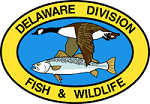Search Level: Standard
Search Term(s): Viola cucullata (1 record found)
Search Term(s): Viola cucullata (1 record found)
VIOLACEAE
Violet Family
Violet Family
Viola cucullata (marsh blue violet)
[ + ]
Synonym
--
Carex Section
--
Meaning of Scientific Name
Viola: classical name for the genus; cucullata: hood-like, hood-shaped
Native Plant
Yes
Life Form
Perennial Herb
Phenology (Flowering Period)
April-May
Physiographic Province
☑ Piedmont
☑ Coastal Plain
County Distribution
☑ New Castle
☑ Kent
☑ Sussex
Habitat
Swamps and floodplains
State Status
Common
Piedmont Status
Common
Coastal Plain Status
Common
Global Rank
--
Federal Status
--
Geographic Affinity
--
Species at Limit of Distribution
☐ Northern
☐ Southern
North American Distribution (Non-indigenous Species)
--
Coefficient of Conservatism
4
Invasive
--
Invasive Watchlist
--
Global Origin (Non-native Species)
--
Wildlife Values
The nectar and/or pollen of the flowers attract honeybees, bumblebees, long-horned bees, mason bees, ants, bee flies, butterflies, and skippers. The foliage is eaten by the larvae of various butterflies, and miscellaneous moths. Nutrient rich elaiosomes on seeds are eaten by ants, as a result, ants help to disperse seed through the forest.
Wetland Indicator Status
FACW+
Medicinal Properties
--
ID Notes
--
Additional Info
--
Habitats in which this plant occurs
Black Ash Seepage SwampForest Interior (Non-tidal Wetland Piedmont)
Forest Interior (Non-tidal Wetland Coastal Plain)
Forested Floodplains and Riparian Swamps (Piedmont)
Forested Floodplains and Riparian Swamps (Coastal Plain)
Freshwater Forested Tidal Wetlands
Isolated Non-tidal Forested Wetlands (Piedmont)
Isolated Non-tidal Forested Wetlands (Coastal Plain)
Seepage Slope Closed Canopy Non-tidal Wetland (Piedmont)
Seepage Slope Closed Canopy Non-tidal Wetland (Coastal Plain)
Seepage Slope Open Canopy Non-tidal Wetland (Piedmont)
Photos
[show|hide]
(click on thumbnail for larger view)


